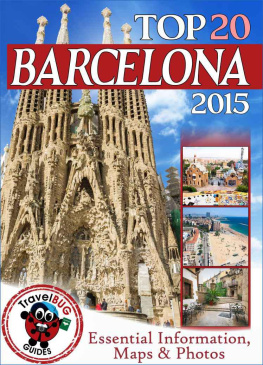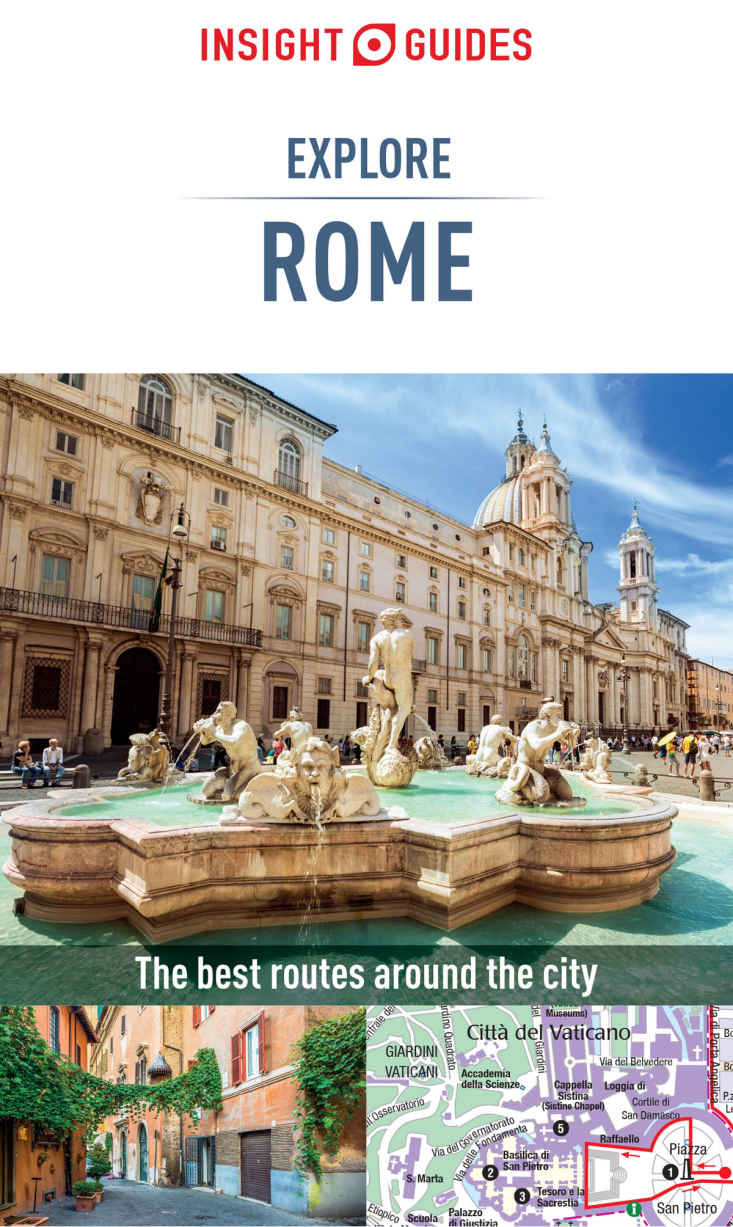How To Use This E-Book
This Explore Guide has been produced by the editors of Insight Guides, whose books have set the standard for visual travel guides since 1970. With top-quality photography and authoritative recommendations, these guidebooks bring you the very best routes and itineraries in the worlds most exciting destinations.
Best Routes
The routes in this book provide something to suit all budgets, tastes and trip lengths. As well as covering the destinations many classic attractions, the itineraries track lesser-known sights, and there are also excursions for those who want to extend their visit outside the city. The routes embrace a range of interests, so whether you are an art fan, a gourmet, a history buff or have kids to entertain, you will find an option to suit.
We recommend reading the whole of a route before setting out. This should help you to familiarise yourself with it and enable you to plan where to stop for refreshments options are shown in the Food and Drink box at the end of each tour.
Introduction
The routes are set in context by this introductory section, giving an overview of the destination to set the scene, plus background information on food and drink, shopping and more, while a succinct history timeline highlights the key events over the centuries.
Directory
Also supporting the routes is a Directory chapter, with a clearly organised AZ of practical information, our pick of where to stay while you are there and select restaurant listings; these eateries complement the more low-key cafs and restaurants that feature within the routes and are intended to offer a wider choice for evening dining. Also included here are some nightlife listings, plus a handy language guide and our recommendations for books and films about the destination.
Getting around the e-book
In the Table of Contents and throughout this e-book you will see hyperlinked references. Just tap a hyperlink once to skip to the section you would like to read. Practical information and listings are also hyperlinked, so as long as you have an external connection to the internet, you can tap a link to go directly to the website for more information.
Maps
All key attractions and sights mentioned in the text are numbered and cross-referenced to high-quality maps. Wherever you see the reference [map] just tap this to go straight to the related map. You can also double-tap any map for a zoom view.
Images
Youll find lots of beautiful high-resolution images that capture the essence of the destination. Simply double-tap on an image to see it full-screen.
2016 Apa Digital (CH) AG and Apa Publications (UK) Ltd
Table of Contents
Recommended Routes For...
Art in churches
Take in the spectacular mosaics of Santa Maria in Trastevere ().
Ming Tang-Evans/Apa Publications
Children
Head for the Villa Borghese park ().
Ming Tang-Evans/Apa Publications
Classic cafs
Drink in Romes literary history at Antico Caff Greco ().
Ming Tang-Evans/Apa Publications
Fine art enthusiasts
An extraordinary collection of ancient art and statuary can be found at the Capitoline Museums ().
Ming Tang-Evans/Apa Publications
Food and wine
The Jewish Ghetto ().
Ming Tang-Evans/Apa Publications
History buffs
Explore the heart of Ancient Rome ().
Ming Tang-Evans/Apa Publications
Romantic Rome
Stroll amid the orange trees of the Parco Savello ().
Ming Tang-Evans/Apa Publications
Shopping
Romes most opulent shopping street is Via dei Condotti ().
Ming Tang-Evans/Apa Publications
Explore Rome
Few other places command the respect and awe of the visitor the way the city of Rome does. The multifaceted and layered nature of the modern city is as much a draw as the ancient monuments, Renaissance palaces and grandeur of the Vatican.
Rome has long been called the Eternal City. It is difficult to tell if the name refers to the city as the seat of the Roman Empire, as the heart of the Catholic Church, as the capital city of Italy, or as a major pilgrim destination. The layer upon layer of history certainly has an eternal feeling, but it is the continuously unfolding drama of the city that is its biggest draw.
Walking through the centro storico (historic centre), one is struck by the sheer size and majesty of the buildings crammed into the narrow, winding streets. Romans somehow manage to live amid their history with a surprising degree of indifference while rushing about their daily lives, and this is something of the appeal of the city.
Visiting the Colosseum
Ming Tang-Evans/Apa Publications
Architecture
The disregard of the local population for their extraordinary surroundings has a natural explanation in overfamiliarity. Rome is a city standing on the shoulders of its predecessors: medieval churches rise from the remains of ancient houses; a Renaissance palace balances on top of the Theatre of Marcellus, standing next to 20th-century apartments. The shapes of streets and piazzas often echo the preceding architectural spaces, providing a sense of discovery at every turn. Its not just the monumental sights that take the eye, either: look out for that shady courtyard with a fountain, that flower growing between ancient marble ruins or a Baroque faade above a modern caf.
Ancient and medieval Rome
Though the shape of the city has developed over three millennia, there were distinct phases of construction. Much of ancient Rome was built between the 1st century BC and 3rd century AD. Many of the buildings in the centre have ancient ruins in their foundations. These were added to in the late medieval period, when resources were limited.



















